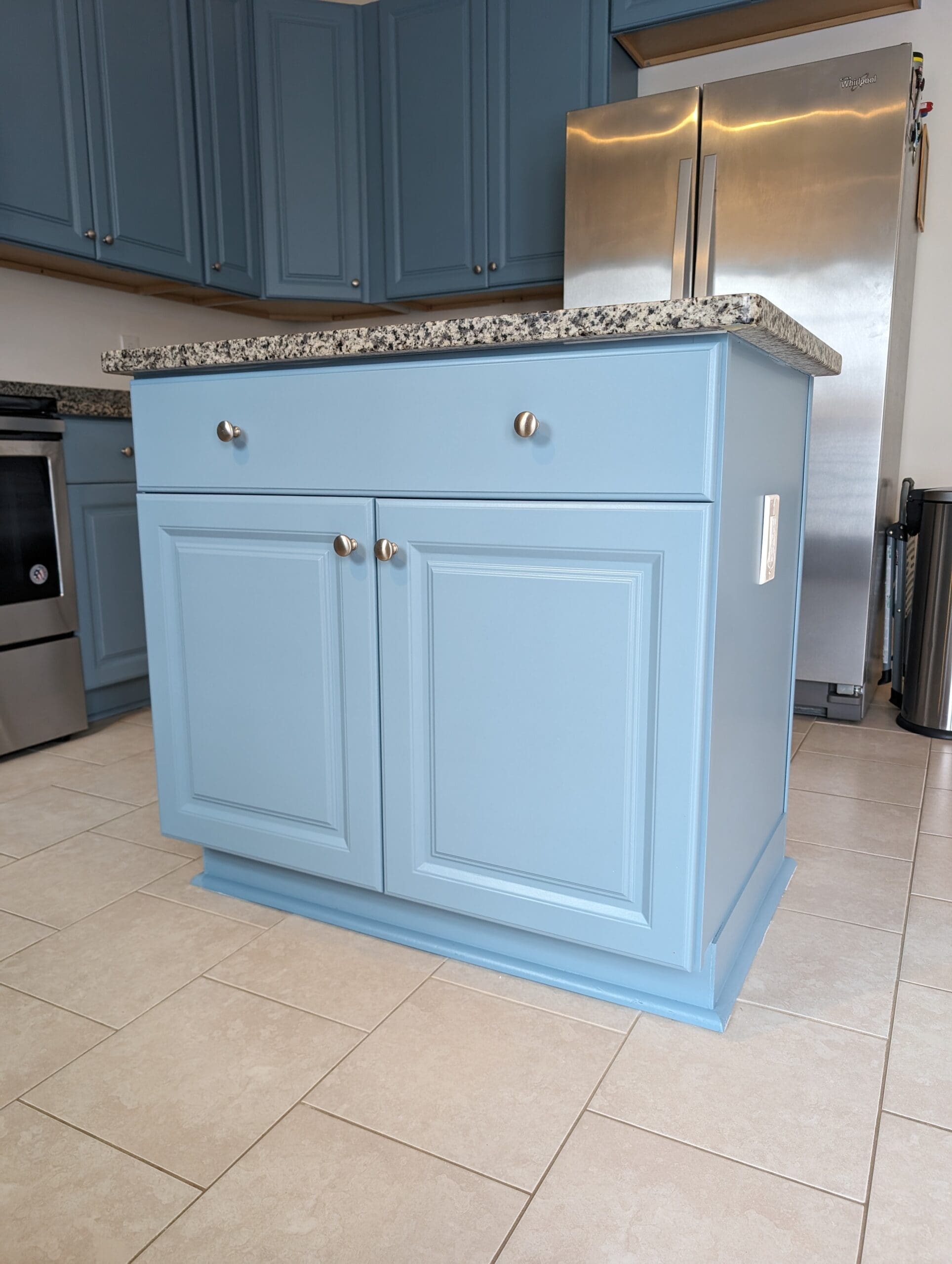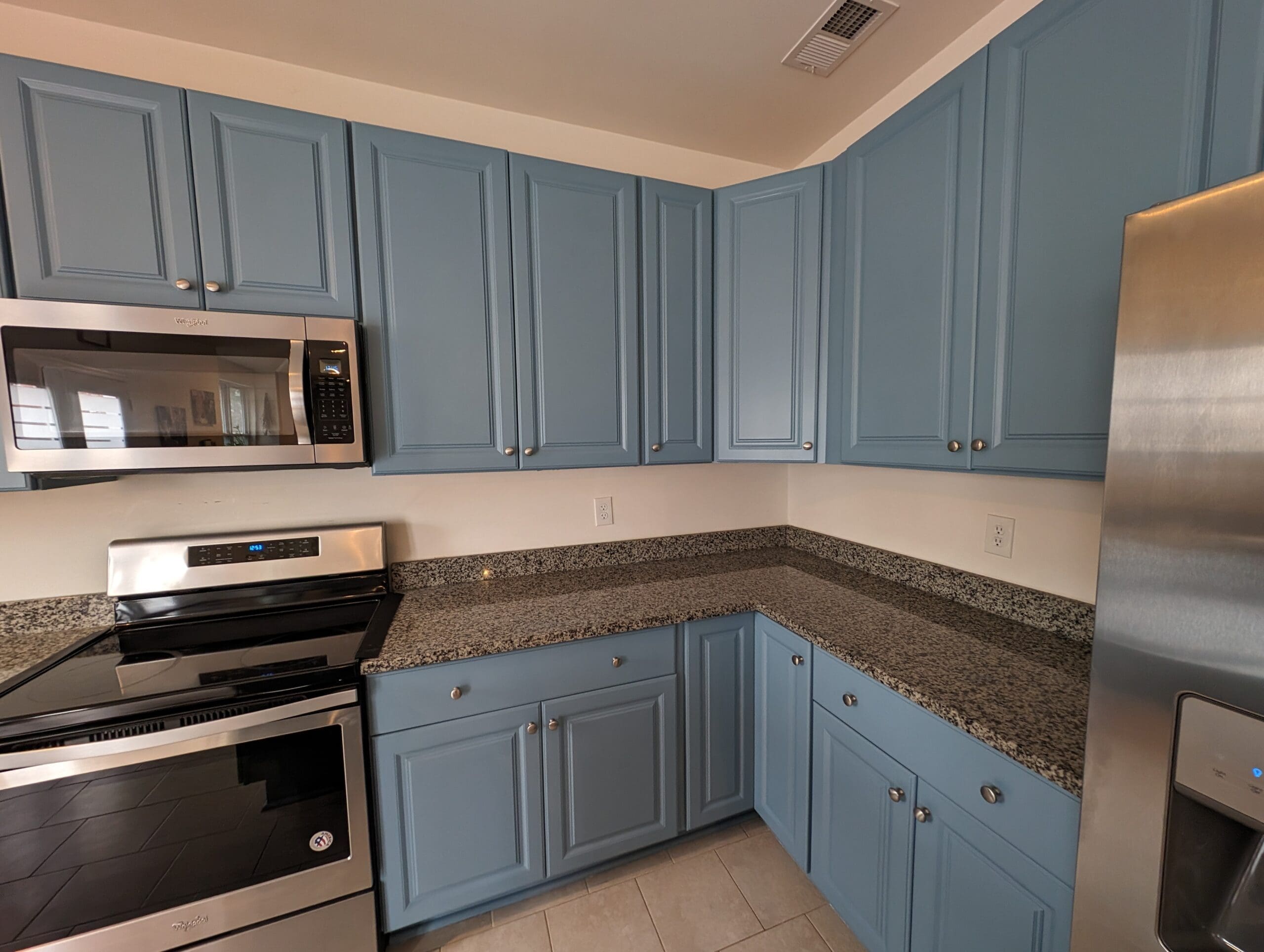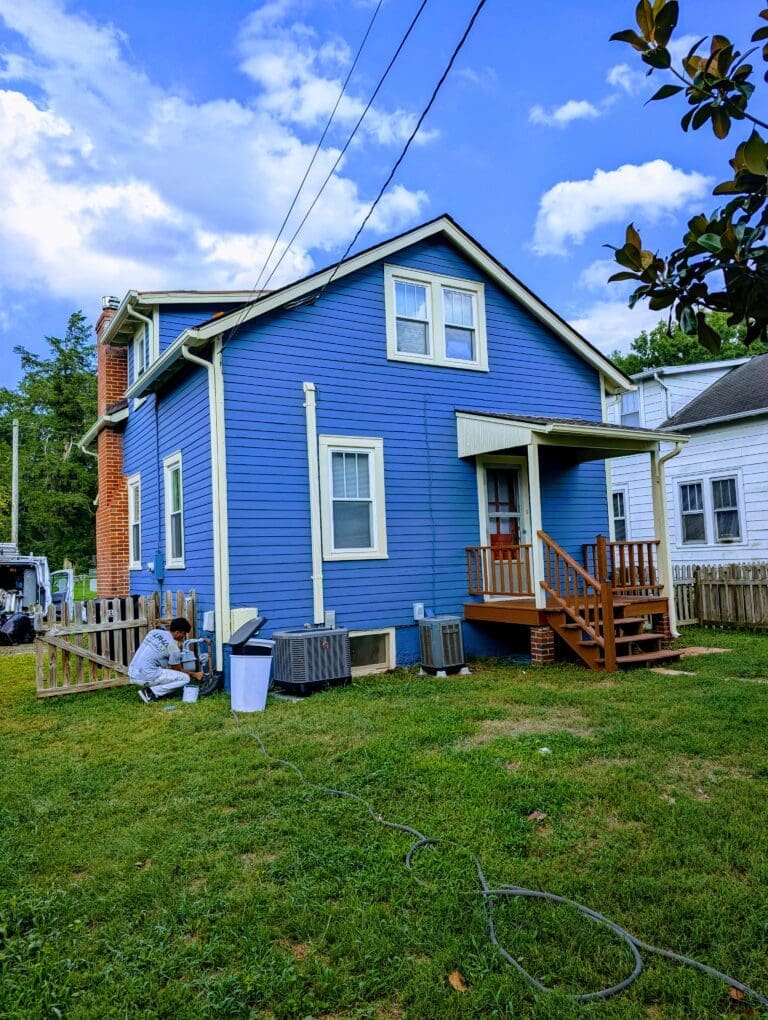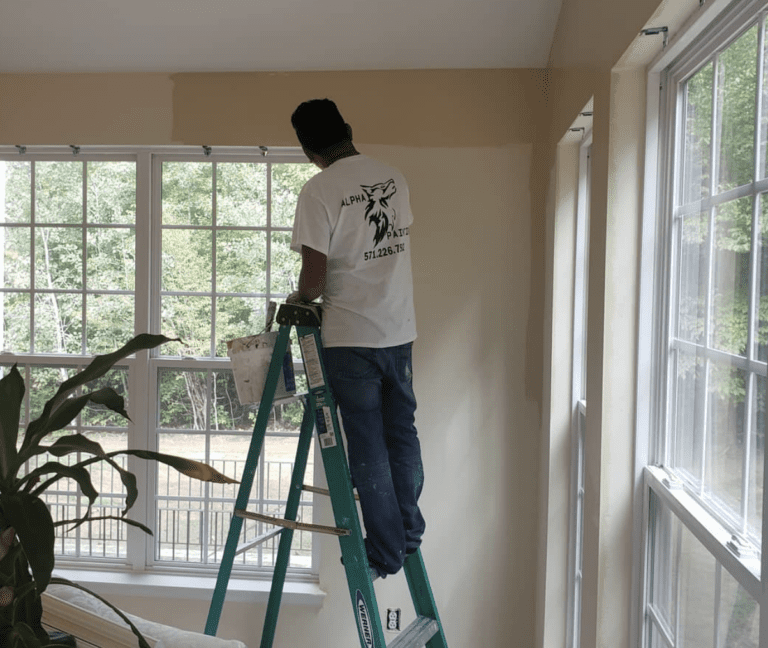Kitchen Cabinet Painters in Fredericksburg: How to Get a Modern Look Without a Full Remodel
Modernizing a kitchen doesn’t always mean tearing it apart. In many Fredericksburg homes, the structure and layout are perfectly functional, but the cabinets make the space feel dated. Replacing them can cost thousands, not to mention the disruption of a full remodel. Painting, on the other hand, gives cabinets a second life without the hefty price tag or prolonged downtime. At Alpha Painting, we’ve worked with homeowners across Fredericksburg to achieve a clean, updated kitchen feel using nothing more than high-quality paint and a sharp eye for detail.
Table of Contents
Why Painting Kitchen Cabinets Works So Well
Kitchen cabinets typically dominate the visual space in the room. When they’re dark, worn, or out of step with current trends, they can drag down the whole aesthetic. Changing their color, sheen, and texture can instantly lighten the atmosphere, add personality, and make the room feel brand new.
Many homeowners are surprised at how drastically different a kitchen looks just by going from an old honey oak or cherry stain to a crisp satin white or bold navy blue. Add updated hardware to the equation, and the transformation becomes even more striking.
The surface preparation involved in cabinet painting also gives an opportunity to repair small damages, re-align crooked doors, and ensure all drawers and hinges function smoothly. Unlike buying new cabinets off the shelf, where materials are standardized and not always built to last, painted cabinets retain the original craftsmanship while introducing a modern finish.
Choosing the Right Color for a Modern Finish
Color choices can make or break the final look. For a modern feel, neutral tones lead the way—especially whites, off-whites, soft grays, charcoal, or deep blues. These shades offer versatility and blend well with various countertop materials, flooring, and backsplash designs. They also reflect natural light more effectively, which makes smaller kitchens feel more open.
For homeowners wanting more contrast, two-tone combinations are trending. This might mean dark lowers paired with lighter uppers or a statement color on the island while keeping perimeter cabinets neutral. The contrast brings depth and interest without overwhelming the space.
It’s also worth considering the undertone of your chosen paint color. Warm-toned grays or greiges (gray-beige blends) complement hardwood floors and stone counters, while cooler tones might pair better with stainless appliances and modern tile.
Finish and Sheen Matter More Than You Think
Paint finish is just as important as color. Cabinets take a daily beating—opening, closing, greasy hands, splashes from cooking, moisture from steam. A low-quality paint or the wrong sheen won’t hold up.
Satin and semi-gloss finishes are most commonly used for cabinets because they offer a slight sheen that’s easy to clean and resistant to moisture. Matte finishes might look sophisticated but can be difficult to maintain in a high-use area like a kitchen.
High-quality acrylic urethane paints or hybrid enamels are often the top choice. They dry harder than standard wall paint, ensuring a durable, chip-resistant surface. A properly cured finish also makes wiping down cabinets with a damp cloth effortless.

The Prep Work Makes All the Difference
Painting cabinets is not a slap-on-and-go job. Surface preparation is what separates a sleek, professional result from a peeling mess. That means degreasing, sanding, filling imperfections, and properly priming the surface before any color goes on.
Cabinet doors and drawer faces should be removed and labeled to ensure they’re returned to the right spots. Hardware must be taken off, and hinges protected or replaced. A clean, dust-free workspace is critical, especially if spraying is involved.
Skimping on prep is where most DIY projects fail. Without proper sanding or bonding primers, paint will start to chip within weeks—especially around handles and edges. Investing in this step is what makes the finish look factory-applied.
Spray vs. Brush: Choosing the Right Application Method
Spraying yields the smoothest, most uniform result. It eliminates brush marks and gives cabinets a fresh, seamless look. But spraying requires the right equipment, containment setup, and ventilation. Not all homes are ideal for onsite spraying, which is why many painters remove doors and drawers to spray them offsite while brushing or rolling the frames in place.
Brushing and rolling can still look professional if done carefully, using high-quality brushes, microfiber rollers, and paint conditioners that extend drying time for a smoother finish. The key lies in applying multiple thin coats, sanding between each layer, and giving ample time for curing.
Timeline and What to Expect During the Process
A professional cabinet painting job typically takes 5 to 7 days, depending on the kitchen size and the number of coats required. Day one is usually all about prep—cleaning, sanding, and taping off surrounding areas. Then comes priming and initial painting. Each coat needs time to dry and cure before the next one is applied.
During the process, you may need to avoid using the kitchen for cooking, especially if doors are off and surfaces are drying. A good contractor will keep the space clean, minimize disruption, and communicate clearly about timelines.
Upgrading Hardware to Complete the Look
Modernizing cabinets goes beyond paint. Swapping out outdated knobs and pulls for sleek, modern hardware can push the whole design forward. Think matte black handles on white cabinets, or brushed brass against navy blue for an elegant pop.
Choosing hardware with the same hole spacing as the old ones saves time and avoids the need for patching. If you’re making the switch to a different style or size, the holes can be filled during prep so everything aligns perfectly after painting.
When to Call a Professional Instead of DIY
There’s a big difference between a weekend DIY paint job and a professionally refinished cabinet set. Homeowners often underestimate the amount of prep, the tools needed, and the drying times involved. A rushed job with cheap materials will start showing wear within months.
A professional team brings the tools, materials, and experience to ensure every cabinet door is smooth, every edge is crisp, and every finish is built to last. They’ll also know how to address stubborn grease stains, warped panels, or water damage that might go unnoticed in a DIY approach.
In Fredericksburg, where many homes range from historic builds to newer construction, cabinet materials and finishes vary widely. Professionals can identify the best approach for each kitchen and make recommendations based on years of hands-on experience.
Final Thoughts
Updating your kitchen doesn’t have to involve demolition or days of dust. With the right paint, preparation, and technique, your existing cabinets can rival the look of a brand-new install. A fresh coat of paint not only modernizes the space—it adds value to your home and refreshes one of the most-used rooms in the house.
Whether you’re planning to enjoy the upgrade yourself or getting ready to list your home, freshly painted cabinets give kitchens a polished, current look that makes a real impact.





